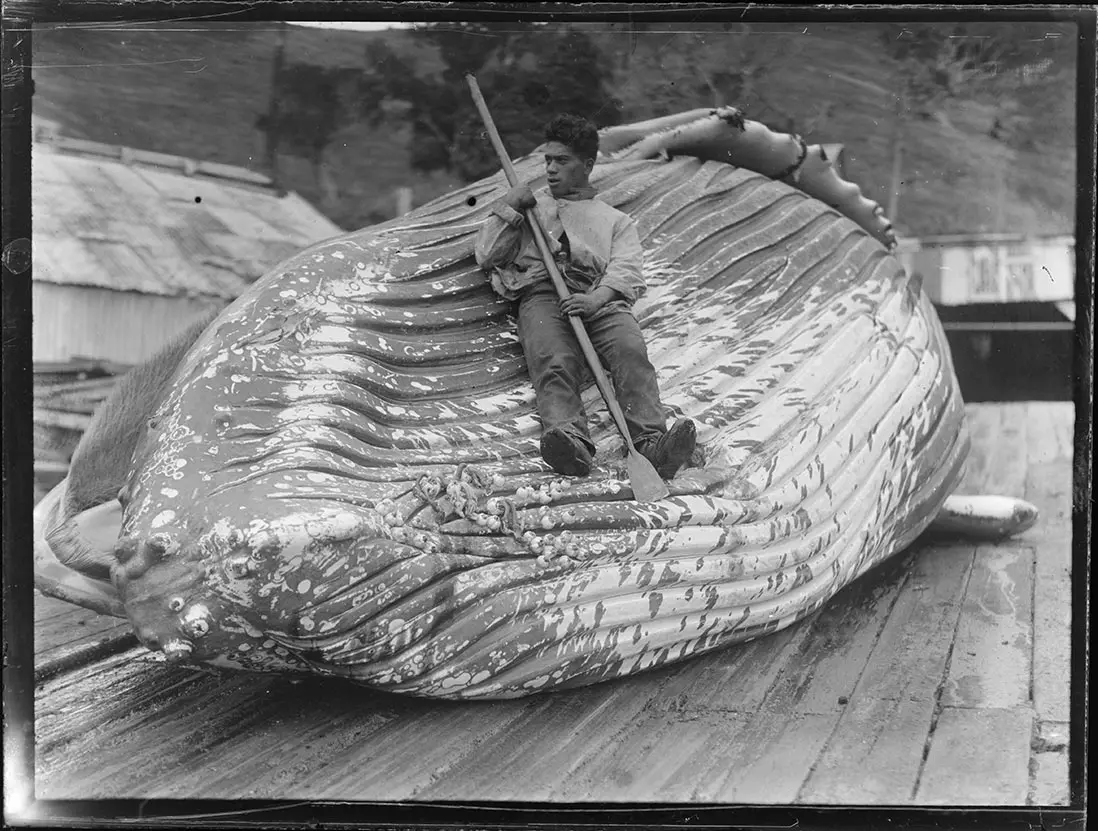Read a story about whaling
Whangamumu, a small, peaceful, bush-fringed harbour tucked away in Pēwhairangi Bay of Islands, once echoed with the sounds of whaling and exuded the smells of the industry. From 1844 to 1941, the harbour was the site of a shore-based whaling station. It has been described as ‘one of the country’s earliest and most economically successful’ whaling operations. It was also unique in New Zealand in its use of nets to catch whales.
Today, winding roads from New Zealand’s first capital, Kororāreka Russell, to Rāwhiti lead travellers past a Department of Conservation sign beside the road, all that indicates the steep track leading up and over the hill to the station. Little remains there aside from rusting iron and graffiti-splattered concrete and brick structures, all gradually being absorbed into the bush.
It’s a poignant place. Commercial whaling is now abhorrent to many New Zealanders, and images like this one are graphic reminders of the vast numbers of whales that were slaughtered and butchered. Our involvement in the industry is now associated with a sense of shame and loss — another example, perhaps, of how we could have done things better in the past.
What is interesting, though, is what we can learn about our history and identity as a nation from accounts of Māori and Pākehā interactions that occurred because of whaling. These relationships began as early as the 1820s, when the first shore-based stations were set up.
The establishment of whaling settlements like Whangamumu was possible only because of the cooperation of local iwi and hapū, who allowed settlement and provided food and other supplies essential for the survival of the whalers. In return, papa kāinga (villages) benefited from the income brought in by the young men who took up whaling. Whangamumu was supported by the nearby community at Rāwhiti. Some 20 men from there are thought to have been living and working at the station by 1899.
It was not uncommon for Pākehā whalers to form relationships with Māori women, tying the two groups together through kinship. These relationships enabled some whalers to acquire land of their own for farming when the whaling industry collapsed. Whalers were also among the first Pākehā to become fluent in te reo Māori, essential to their survival as a minority culture within the Māori world.
Mana whenua from Rāwhiti are still involved with the Whangamumu station. Today, however, they work with the Department of Conservation to care for the site and to preserve the stories that give insights into much more than just whaling.
Story written by: Erena Williamson
Copyright: Turnbull Endowment Trust
Find out more
Explore the Alexander Turnbull Library collections further: Whaling.
Topic Explorer has:
Many Answers has Early settlers (New Zealand).
Want to share, print or reuse one of our images? Read the guidelines for reusing Alexander Turnbull Library images.
Curriculum links
